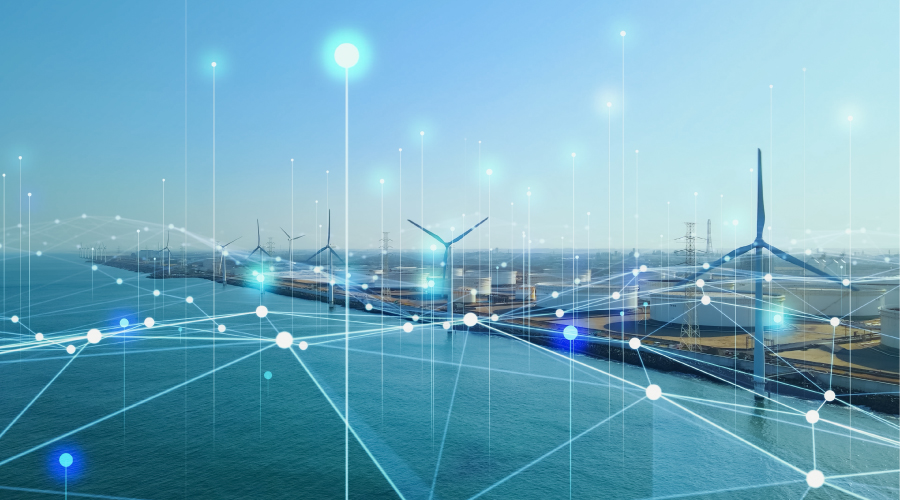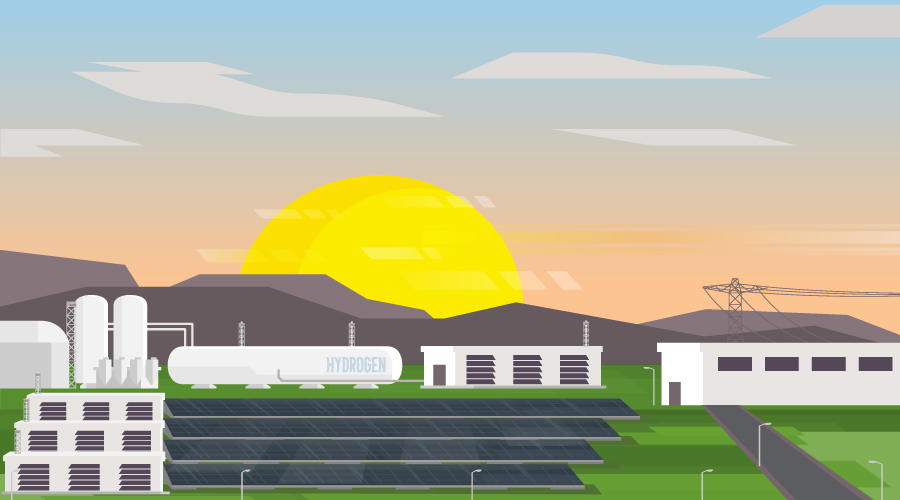Strategies for Improving Facility Resilience
As extreme weather increases, so also do power outages. Here’s what you need to know to improve facility resilience.
By Greg Zimmerman, senior contributing editor
Even as utilities work ardently to improve grid reliability, the sad truth is that an increase in extreme weather has increased grid unreliability as well. A recent study by Climate Central showed that blackouts increased 64 percent in the 2010s compared with the 2000s. More than 80 percent of those blackouts are due to weather, according to the study.
So what can facility managers do to increase their facilities’ resilience to power outages? Lots, say experts. From microgrids to deep energy retrofits to onsite renewable energy, facility managers have lots of options in terms of not just making a facility more resilient in the case of a blackout, but also ensuring business continuity.
There are many considerations for these options, however. Cost is always at the top of the list. The return on investment for resilience strategies can be calculated by do a risk assessment and then simply calculating the cost of lost business in the event of a blackout, natural disaster, or other event. This may not be a perfect science, but the last thing the C-suite will want to hear if a business goes down for several days is that the outage was preventable.
FacilitiesNet recently spoke with Brian Patterson, founder and chairman of the board of the Emerge Alliance, an organization founded in 2008 to promote the adoption of new vanguard standards for direct current (DC) and hybrid AC/DC power infrastructure in buildings, neighborhoods and communities. Patterson discusses the need for facility resilience and why resilience is such a crucial strategy facility managers must prioritize.
FacilitiesNet: Why is resilience in commercial facilities increasingly crucial?
Patterson: There are an increasing number of threats, some of which have turned into all-out attacks on the supply of power from the national and regional electricity grids. The five critical areas of power grid vulnerability and challenge include:
- Generation Shortages – The shear amount of electricity needed in this country, and for that matter, around the world, is outstripping the available supply. Electrifying transportation, using highly efficient electric heat pumps for heating and air conditioning, and increasing both electronic information and communication and industrial robotics are all ‘killer apps’ from a consumption viewpoint. Add these to simple population growth, and the need for more electricity approaches double what we produce today in just 20-30 years.
- Power Flow Destabilization - The amount of distributed and intermittent energy sources to solve challenge No. 1 is growing. It is expected that by 2050, 62 percent of generated energy will be from distributed and intermittent sources such as renewables. However, connecting distributed energy resources (DERs) with the grid is not as simple as it may seem. And their effectiveness is entirely dependent on a variety of highly variable conditions, such as weather. As such, DERs are considered unstable energy sources and their unmanaged operation can cause serious grid imbalances.
- Physical System Destruction - The two most common causes of blackouts are extreme weather conditions and time-worn power lines. Serious cases of power outages have threatened millions of people and already caused billion-dollar damages across the United States. Besides paralyzing life within the affected areas, a huge blackout can result in electronic device damage, food and water spoilage, supply losses, and important data and communications losses. As electric transportation and heating and cooling needs increase, the effects of power loss will be increasingly catastrophic. Some forms of line damage cause secondary damage, the most dangerous of which is forest fires of the kind we’ve seen California.
- Local Overloading - Electric vehicles (EV) are still relatively rare, but advances in technology are increasing their acceptance and use. However, EV charging can be slow and fast supercharging can peak the demand for immense amounts of electricity. One full fast charge of a car equals the start-up and running of 70 air-conditioning units simultaneously. Such instant changes in power demand is a huge problem for the grid. Electromobility peak demands will make the proverbial ‘Duck Curve’ look like a kid’s bath toy in comparison. Nighttime charging will load local transformers which were designed to cool-down overnight. This will shorten their life due to thermal damage over time. And even that assumes they can even handle the additional load to begin with.
- Loss of Control - As helpful as the digitization of the energy sector is, it has its side effects as well. There have already been cases detected when a group of hackers infiltrated systems of energy companies and exposed thousands of households to a controlled blackout. And physical attacks, including internally or externally generated electromagnetic pulse disruption, are difficult and expensive to protect against. Even an attack on food sources or other vital supplies can cause major issues and panic in society. As transportation goes electric, the devastation of power lines can take a long time to repair, and thus restoration of critical supplies will be increasingly difficult.
Given the above, the increasing frequency and duration of blackouts is a growing reality for Americans and American businesses.
The average power loss has nearly doubled in the last 10 years to about 8 hours, and the trend going forward is on an upward curve. The Department of Energy estimate of cost to the economy tops $150 billion annually, and those are only direct costs, the indirect costs could easily double that number. While consumer costs are relatively easy to calculate, food spoilage, frozen pipes, loss of income, etc., the cost for businesses vary greatly with the type and size of business. The range of costs runs from tens of thousands to tens of millions of dollars per hour.
Averages don’t really tell the whole story. Businesses need to take an accounting of their own specific loss potential to truly understand the risk of financial loss they may be subject to. Frequency AND duration of loss can make a huge difference. A frozen food warehouse business may not suffer much from a short duration loss of a few seconds or minutes, while an automated factory that uses NC machine tools and computer-controlled processes may lose hours of production time from those same short duration interruptions due to the need for recalibration and production line clearing and process restarting.
So whatever the loss calculation might be for any business, it’s time to take another look to update those estimates and project them into the future to avoid the old adage of closing the barn door long after the horses got out.
Greg Zimmerman is senior contributor editor for the facility group, which including FacilitiesNet.com and Building Operating Management magazine. He has more than 19 years’ experience writing about facility issues.
Related Topics:












